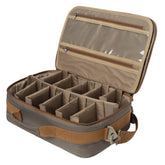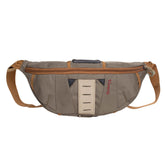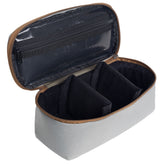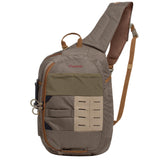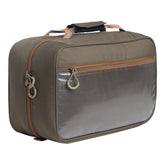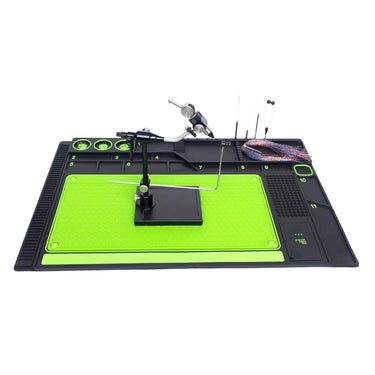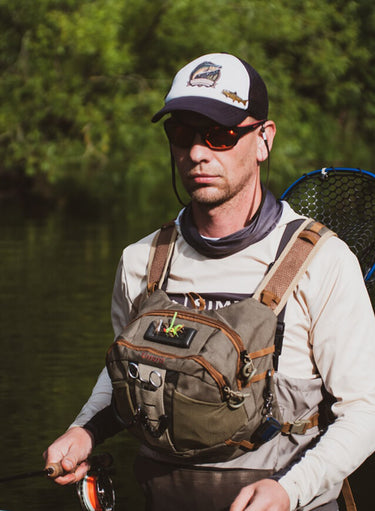Fly Vests: A Comparison of Simms, Orvis, and Patagonia Mesh Fishing Vests
When it comes to fly fishing, having the right gear makes all the difference. Choosing a quality fishing vest enhances my experience on the water by providing easy access to essential tools and supplies. I've explored various options, including the Simms mesh fishing vest, Orvis fishing vest, and Patagonia fishing vest, each offering unique features tailored for serious anglers.

The mesh design of some fishing vests ensures breathability during warm days, which is crucial for comfort. I appreciate how these vests not only offer ample storage for flies, tackle, and other fishing gear but also allow for unhindered movement while casting. Each brand, from Simms to Fishpond, delivers specific benefits that cater to different fishing styles and preferences.
For anyone looking to invest in their fly fishing experience, understanding the features of these vests can significantly impact your enjoyment and efficiency on the water. Whether it's the durability of the fabric or the organization of pockets, a well-chosen vest is a vital component of my fishing arsenal.
Overview of Fly Fishing Vests
Fly fishing vests are essential for organizing gear while offering comfort during long days on the water. When selecting a vest, I consider the materials, design, and whether to choose a vest or pack based on personal needs.
Materials and Design
Most fly fishing vests use materials like nylon ripstop and polyester for durability. These fabrics resist tearing, making them ideal for outdoor conditions. Lightweight mesh designs improve breathability, ensuring comfort in warmer weather.
Vests often come with multiple pockets strategically placed for easy access to tools, flies, and other essentials. Some options include insulated vests for colder conditions. Adjustable straps allow for a customizable fit, accommodating layers beneath. I appreciate vests that combine functionality with a minimalist style, reducing bulk without sacrificing capacity.
Vest Versus Packs
Choosing between a vest and a pack largely comes down to personal preference and specific fishing conditions. Vests offer immediate access to gear, with pockets positioned for quick retrieval. They are ideal for those who prefer a traditional setup.
On the other hand, chest packs and sling packs provide flexible storage solutions that distribute weight evenly. Some anglers favor backpacks or hip packs for longer excursions, as they can hold more gear and often feature hydration compartments. Evaluating my fishing style helps to determine which option suits me best, balancing access and comfort throughout the day.
Popular Fly Fishing Vest Brands
When selecting a fly fishing vest, several brands stand out for their quality and innovative designs. I will explore a few prominent options, each offering unique features that cater to different needs in the field.
Simms Fishing Vests
Simms is renowned for its high-quality fishing gear, particularly the Simms G3 Guide Vest. This vest combines practicality with comfort, featuring ample pockets, adjustable straps, and durable materials. The mesh design promotes airflow, keeping me cool on warm days.
The G3 Guide Vest also includes a large rear pocket for storage and integrated hydration systems. I appreciate the attention to detail, such as tippet and tool access, which enhances functionality. Choosing Simms means investing in durability and performance.
Orvis Fishing Vests
Orvis is another respected name in fly fishing. The Orvis Clearwater Fishing Vest stands out for offering excellent organization with multiple pockets designed for various tools and tackle. Its breathable mesh back is ideal for hot weather, ensuring comfort during long hours on the water.
I find that the Clearwater Vest balances functionality and style, making it suitable for both casual and serious anglers. The vest includes a front zip for easy on-off access, which adds to its appeal. Overall, Orvis combines classic design with modern materials effectively.
Patagonia Fishing Gear
Patagonia's fishing vests reflect their commitment to sustainability and performance. I particularly like the Patagonia Stealth Pack Vest. This vest integrates pack storage with a streamlined vest design, which is perfect for carrying gear without feeling cumbersome.
Features include a mix of waterproof materials and a number of zipped pockets for secure storage. Additionally, the design supports easy access to fly boxes and tools. Patagonia's vests are durable and environmentally friendly, aligning with my values as an outdoor enthusiast.
Fishpond Innovative Designs
Fishpond is known for its innovative approach to fishing gear, including their vests. I admire the Fishpond Thunderhead Sling Vest for its versatility and comfort. This vest combines features of a pack with the functionality of a traditional vest.
The Thunderhead includes waterproof materials and multiple organizational pockets. The lightweight design helps distribute weight, allowing me to maneuver easily while fishing. Fishpond products often come with unique design elements, making them stand out in both performance and aesthetic appeal.
Practical Aspects of Fly Fishing Vests
When choosing a fly fishing vest, I prioritize factors that enhance my experience on the water. Key aspects like storage, comfort, and adaptability to various weather conditions play a significant role in my decisions.
Storage and Accessibility
A well-designed fly fishing vest offers ample storage for essentials such as flies, tools, and accessories. Vests like the Simms mesh fishing vest and Orvis fishing vest typically feature multiple pockets of varying sizes.
Pockets are usually designed for specific gear:
- Fly pockets: For quick access to my favorite patterns.
- Tool pockets: To securely hold nippers and hemostats.
- Waterproof packs: Essential for keeping important items dry.
Accessibility is also crucial. Zippered pockets provide security, while magnetic closures allow for swift retrieval of items. With the right vest, I can easily switch between different tools without delay.
Comfort and Fit
Comfort is paramount, especially during long days on the water. I focus on vests that offer adjustable straps and a breathable design, such as those from Patagonia. A good fit ensures that my movements are not restricted while casting or wading.
Key comfort features to look for:
- Lightweight materials: To avoid added fatigue.
- Mesh panels: For ventilation and to help keep cool on warmer days.
- Ergonomic design: To distribute weight evenly across my shoulders.
Choosing the right size is essential; a vest that is too loose can hinder my movements, while a tight fit may become uncomfortable.
Weather and Environmental Adaptability
Weather can be unpredictable, so I select vests that can handle various conditions. Both the Simms and Patagonia vests often come with water-resistant fabrics. This feature is essential for safeguarding my gear during sudden rain showers.
Additionally, having options for layering is vital. Many vests include room for adding insulation without bulk. Features such as:
- Quick-drying materials: Help manage moisture.
- Adjustable necklines: Enhance breathability in different temperatures.
With the right vest, I'm equipped to face diverse environmental conditions without compromising my comfort or functionality.



